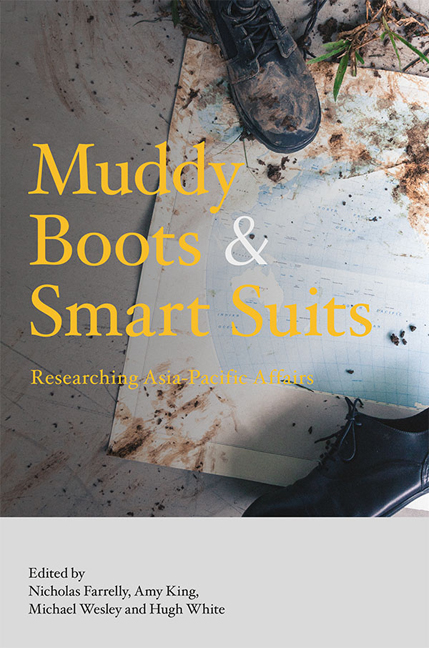Book contents
- Frontmatter
- Contents
- About the Contributors
- 1 Introduction to Research in Asia-Pacific Affairs
- Section I In the Field
- Section II Analysing Politics
- Section III Shaping a Region
- Section IV Conflict and Order
- 9 War and Order: Thinking about Military Force in International Affairs
- 10 Power, Prestige, and Order
- 11 Strategic Culture in the Asia-Pacific: Putting Policy in Context
- Section V Policy and Practice
- Bibliography
- Index
9 - War and Order: Thinking about Military Force in International Affairs
from Section IV - Conflict and Order
Published online by Cambridge University Press: 12 January 2018
- Frontmatter
- Contents
- About the Contributors
- 1 Introduction to Research in Asia-Pacific Affairs
- Section I In the Field
- Section II Analysing Politics
- Section III Shaping a Region
- Section IV Conflict and Order
- 9 War and Order: Thinking about Military Force in International Affairs
- 10 Power, Prestige, and Order
- 11 Strategic Culture in the Asia-Pacific: Putting Policy in Context
- Section V Policy and Practice
- Bibliography
- Index
Summary
MILITARY ORDER AND INTERNATIONAL RELATIONS
The study of international relations today faces a formidable methodological problem: how to understand the role of power in relations between powerful states, and especially in the creation, maintenance, and decline of the international orders which frame those relations within groups or systems of states from time to time. The problem extends to explaining the role of power in general, but it is most acute in relation to power in its starkest form — military power. That is the focus of this chapter. It explores the role of military power in shaping orders in systems of states.
This is hardly a new question. Military power has been central to the conduct and study of international relations since states and state systems first emerged. But today it is poorly understood and its influence on current developments is generally underestimated, especially perhaps by analysts and decision makers in the West. This has big implications for our understanding of the choices that countries of the West now face, and of the risks they may confront at a time when, it is now generally accepted, we face a significant shift — or set of shifts — in international order. These choices and risks bear upon Australia as much as on any Western country, and perhaps more than on most. It therefore seems important, for very practical reasons, to make sure we refresh our understanding of the role of force in shaping international orders.
This chapter suggests a simple way to see this issue: an international order in a system of states is framed — its boundaries are defined — primarily or ultimately by what the great powers within the system are willing to go to war with one another over. Or, to be a little more precise, an order is framed by what the great powers can convince one another they are willing to go to war with one other over. One obvious example is the bipolar global order of the Cold War era, which was framed by the clear conviction on each side of the other's willingness to go to war to defend their established spheres of influence in the key European and Northeast Asian theatres.
- Type
- Chapter
- Information
- Muddy Boots and Smart SuitsResearching Asia-Pacific Affairs, pp. 127 - 140Publisher: ISEAS–Yusof Ishak InstitutePrint publication year: 2017

